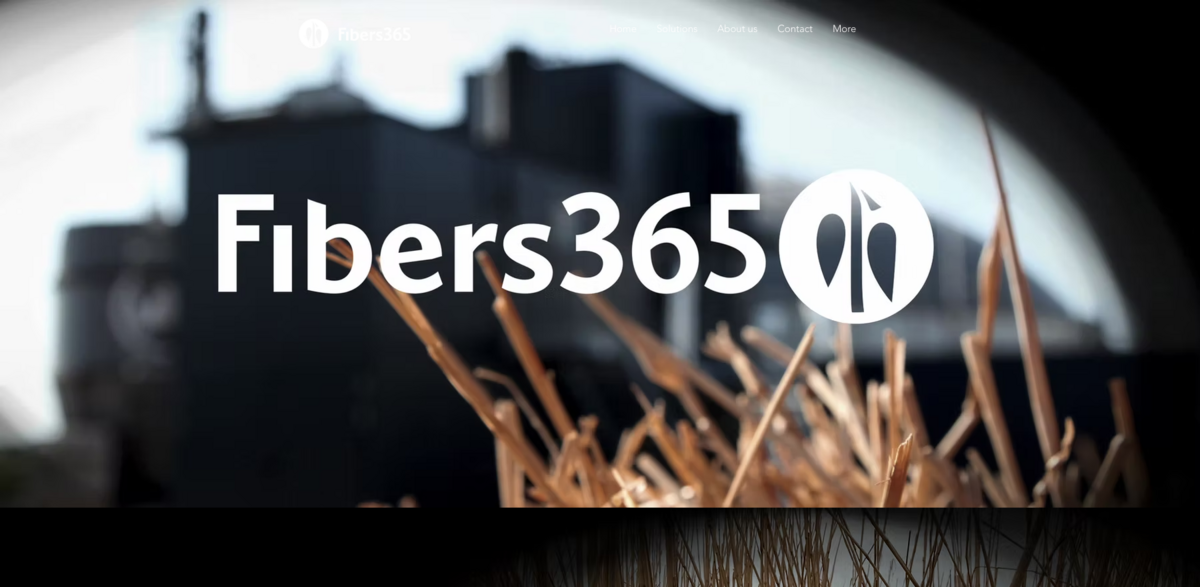What is the Fibers365 Bioeconomy Model?
Fibers365 represents a cutting-edge, carbon-neutral cellulose and lignin production model, built around a decentralized concept that emphasizes regionally sourced feedstock. At the heart of the approach lie the de-centralized SteamFiber plants which rely on annual plants and harvesting by-products. In a truly innovative design, Fibers365 produces cellulose pulp – known as Fibers365 pulp – and Lignin365 directly “on farm.” The design proudly champions a chemical-free processing method, taking advantage of a patented, low cost, automated, containerized steam explosion process capable of pulping all kinds of non-wood fiber crops, all while requiring less processing energy than the intrinsic energy contained in the pulped biomass… It’s a model that embraces sustainability and efficiency in every step.
Main Benefits of the Fibers365 Approach
Key figures and facts include:
- De-centralized sites utilizing standardized, modular SteamFiber plants.
- Processing capacities that range from 10,000 to 30,000 tons of dry biomass per year.
- The basic SteamFiber10 model produces 5,000 tons of Fibers365 cellulose pulp and 500 tons of Lignin365 annually on a compact footprint of less than 2,000 m².
- Production side-streams are efficiently treated in biogas plants, generating bio-methane for energy self-sufficient operations.
- This model supports carbon-negative outcomes by utilizing agricultural feedstock and recycling digestion residues rich in organic and mineral compounds back to land, balancing humus and nutrition demands.
- Significantly lower CAPEX and OPEX compared to traditional pulping technologies for both wood and non-wood fibers.
Modular SteamFiber Plants
The backbone of the Fibers365 concept is its SteamFiber plants, celebrated for their standardized and modular design. These setups are ideal for de-centralized sites as they can be tailor-fit to local agricultural and production conditions. The flexibility of a modular design allows for quick adaptation to evolving operational demands, and each plant is built to process biomass efficiently through a containerized pulping process. Not only do these plants produce a high-quality cellulose pulp and lignin, they also do so using minimal space and energy, which underscores the efficiency that the model promises.
Sustainable Bioeconomy Integration
This innovative approach is tightly interwoven with modern bioeconomy practices: energetic and carbon storage aspects are key. The production process integrates agricultural systems, where the by-products not immediately used for pulp and lignin production find life in biogas plants. The resulting bio-methane is recycled to power the operations, creating an almost self-sufficient energy cycle. Additionally, organic residues left after digestion are recycled back to the fields, improving soil quality by balancing both humus levels and nutrition demands. This energy and nutrient loop not only supports sustainable agricultural practices but also ensures that the entire production remains carbon neutral, even tending towards carbon negative in nature.
Innovative Production Process
Central to the process is a proprietary containerized pulping method that is both competitive and ecologically responsible. The patented steam explosion process is designed to maximize the pulping potential of non-wood fiber crops, while significantly reducing the need for chemicals. The production results in a liquid phase that is rich in potential, unlocking avenues for biogas and fertilizer production as well as the development of economical biopolymers. The setup is designed around automation, minimal human intervention, and low operational costs, making it an appealing alternative to traditional methods. This dynamic approach not only leverages technology but also cleverly uses on-farm resources and side-streams to deliver a true bioeconomy model.
Industry Impact and Operational Excellence
Fibers365 GmbH spearheads this initiative by developing, financing, and operating a network that includes both proprietary and licensed third party Steam Fiber Units. The scale and efficiency of these operations have been recognized by award panels for their excellence. With a focus on competitive, regional processing of non-wood crop fibers, the technology showcases a dramatic reduction in both capital expenditure and operational expenditure compared to conventional pulping technologies. The use of a chemical free process further supports biogas and fertilizer production, making it a singular example of how industrial operations can remain both profitable and eco-friendly. The inclusion of a containerized design means that these units can be set up with minimal footprint and maximum flexibility.
Project Impact on Sustainable Development Goals
- SDG 7: Affordable and Clean Energy – Through the production of bio-methane and self-sufficient energy cycles.
- SDG 9: Industry, Innovation, and Infrastructure – Via the modular, containerized design and innovative steam explosion process.
- SDG 12: Responsible Consumption and Production – Supported by the recycling of digestion residues and the chemical-free pulping process.
- SDG 13: Climate Action – The model promotes a carbon-negative process and lower overall emissions.
- SDG 15: Life on Land – By returning mineral and organic compounds to agricultural lands and enhancing soil quality.
Global Strategy and Future Perspectives
The Fibers365 concept is not just a localized success but a global strategy for rethinking how biomass and agricultural by-products can fuel both industry and environmental stewardship. As industries pivot towards more sustainable practices, the Fibers365 Bioeconomy Model offers a glimpse of the future, one where production processes go hand in hand with nature. The integration of renewable energy production through biogas plants, the low CAPEX and OPEX advantages, and the commitment to remain chemical free, all form a holistic approach to modern industrial challenges. With operations designed to be self-sufficient and resilient, there is a clear push for innovation that not only supports but enhances the natural life cycle, paving the way for a more sustainable, greener future. The streamlined process, together with competitive advantages and robust environmental credentials, ensures that as global markets evolve, sustainable practices will lead the next era of industrial development…





















